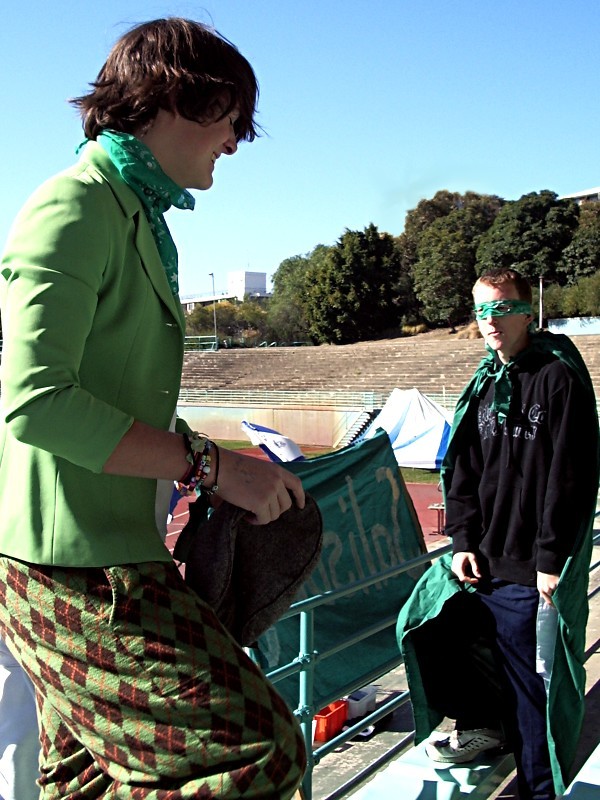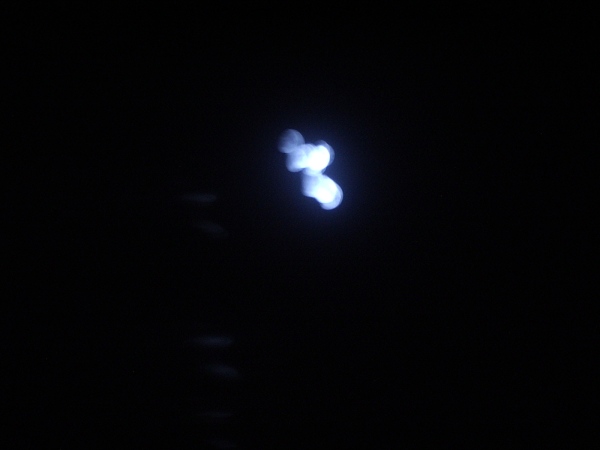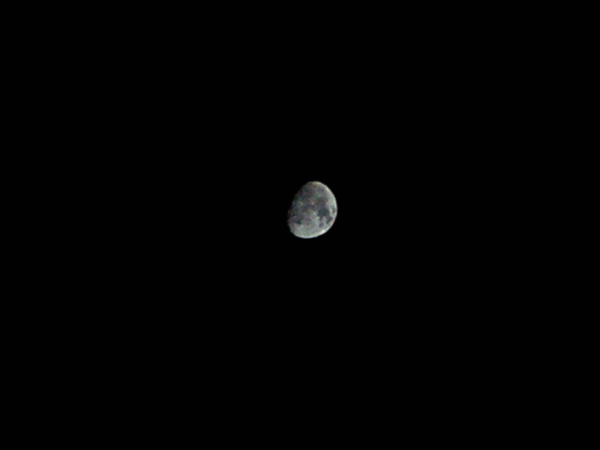Sports carnivals and ridiculous clothes
17 Aug 2005
I’ve delivered simple, clear and easy-to-use services for 20 years, for startups, scaleups and government. I write about the nerdy bits here.
— @joahua
I took these photos over the last night or two with my digital camera. The reason the moon is this large/detailed is (mostly) that I’ve cropped the images to this size, and was using maximum optical zoom on the camera itself when I took the photos (which is why the third is so blurry, I guess!)
The third image, as well as the last two, were shot through a filter (not a later digital filter, but optical) — I’m not entirely sure why the colours are so different, truth be told!
The second and third photos are just overexposed — the only difference is that I held my hand adequately steady for the second, whilst in the third it slipped a bit. I’m noticing a resemblance to the Lucidien brand in how that photo came out, but their logo is produced with Photoshop effects, not taken from a photo. But hey, a cool look nonetheless!





Their website sucks. Really, a lot. Muchly. I don’t care about the markup: it’s just plain unusable. Form submission times out without warning that there is a time limit on applications, copy flaws abound: the website is just crap, in every sense of the word (well, okay, the design is mediocre, not crap, but everything else is crap. Very.)
I’ll probably juggle the order a bit, later on, but I just wanted to get it in and done!
UNSW’s education programme looks pretty… something not great. And the UTS course is really just a filler to make up nine. Other than that, I think I’d be pretty happy with any of those courses (heh, marks almost certainly won’t permit most of them, but ah well). As an aside, I did sort of succumb to the temptation to put higher-mark courses first, but… meh!
I’ve recently put up Google Adsense ads, as an experiment, and this has drawn some comments in an unrelated thread. Normally, my policy with such things is to delete unrelated posts (that is, comments that are clearly in relation to another post — especially if that other post has comments closed — or are simply too off-the-wall on a not already-nonsensical post), but, seeing as I hadn’t provided a facility for discussion of this topic yet, it made sense to leave them.
On advice of various comments, I’ve gone and checked the contract that exists between Google and this website and determined that there is no restriction on my disclosure of the earnings, or reasons for drawing attention to the ads in this way: notably, this attention is not considered “undue”, because the original observation that commenced this conversation was made not by myself, but by a regular participant (I don’t use the word “visitor” because, as people contribute comments and other content, this ceases to be “my” site, and becomes a collective environment: much of the web is intrinsically open-source.), and this is just my response, required to be made in public — all that varied was the prominence of the posting, and, given the scattered feedback I’d received, prominence was called for. This post, therefore, is in no way “undue”. Okay, so now I’ve got the legal junk out of the way, about Adsense.
I’ve instigated this programme for a few reasons. Firstly, and probably most importantly, in a purely intellectual and benign way: simply to see how it worked; what it was like; what was good, bad, and/or ugly about it. My second reason was of course commercial in nature — that is ultimately the purpose of advertising in a web environment. In a sense, the intellectual aspect extends to this: I did want to know what kind of revenue it generated with the kind of content I published. I have a feeling I would have made more money had Movie in a Minute received regular updates and had I implemented targeted ads in that space, but no matter.
The fiscal aspect of this decision is not, however, purely selfish. The funds raised — at this point a meagre $USD2.92 (more on that in a moment) — were never intended to be retained for my own use. I’d hoped they would raise some amount a little more substantial than that, which would form a part of my giving to the ESM congregation (which is currently a bit behind budget, but you know, that’s not really something of concern to most of this site’s audience)… but, at this point, it doesn’t look as though the program is worth continuing given its intrusion vs. benefits ratio.
I’m legally not allowed to say what I earn per day or per click (I’ll tell you that it varies anyway — that is, there’s no fixed rate per click), but I will say that over $USD2.50 of that $USD2.92 was earnt in the first 48 hours, presumably as one or two people were trying to figure out what I’d done and clicked them accordingly. Since then, revenue has been… well, you can do the maths.
Chances are the ads aren’t staying long, but I’ll give it a full month, maybe two, to review the situation more completely before deciding.